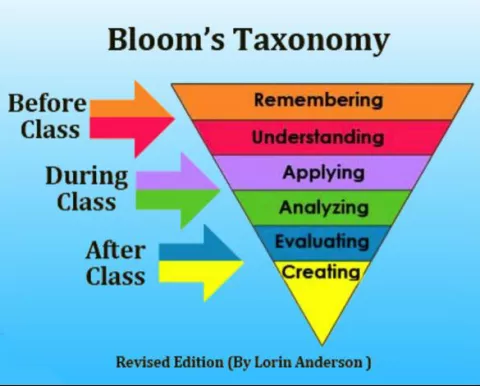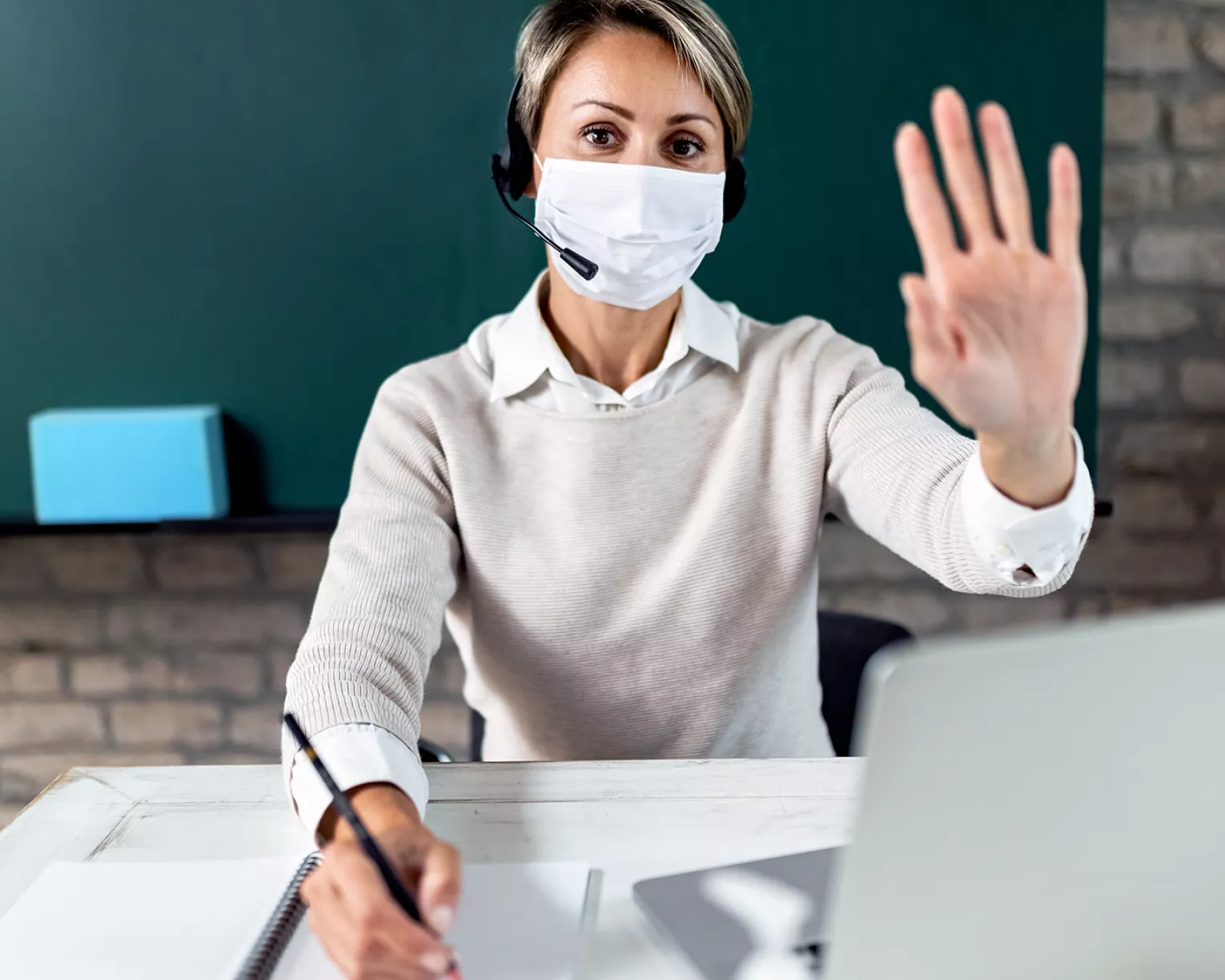The COVID-19 pandemic has brought about new challenges for educators as learning in many school districts has transitioned from in-person instruction to distance learning models that include combinations of in-person instruction and virtual learning. As a result, educators are faced with implementing new learning models and may be required to implement multiple models concurrently. This resource provides you with information about distance learning models, common distance learning pedagogical practices, and tips for implementation.
Hybrid flexible or Hyflex
What is hyflex learning?
Hyflex learning is a modality of teaching that presents the components of hybrid or blended learning in a flexible course structure that gives students the option of attending sessions in the classroom, participating online, or doing both.
- Characterized by the flexibility of attendance modes.
- Lends itself more to synchronous learning.
- Students can participate either face-to-face or online in real-time (synchronous learning), at the time, place, and pace of the student’s choosing (asynchronous learning), or both.
- Technology is used to provide real-time online instruction, recorded instruction, facilitate learning activities, communicate with students, house resources and learning materials, and serve as a portal for receiving and returning assignments.
Blended
What is blended learning?
Blended learning is modality of teaching where students learn via electronic and online media as well as traditional face-to-face teaching.
- Combines face-to-face instruction and online instruction.
- Lends itself more to asynchronous learning.
- Students attend a partial schedule of face-to-face classes (synchronous learning).
- Technology is used to deliver additional content, facilitate learning activities, communicate with students, house resources and learning materials, and serve as a portal for receiving and returning assignments.
- The online learning is done at the time, place, and pace of student’s choosing (asynchronous learning).
Common Distance Learning Pedagogical Practices
Many pedagogical practices for hyflex and blended learning are similar; however, there are key differences. Where hyflex depends on live instruction, blended relies on both recorded and live instruction. Because hyflex instruction relies more heavily on synchronous learning, formative assessments can include the use of real-time student response tools and converselsy the more asynchronous nature of the blended learning model does not lend itself to the use of these tools with regularity. The common pedagogical practices for virtual learning are described in context in the companion documents Rethinking the Classroom for Hyflex Learning and Rethinking the Classroom for Blended Learning.
Accommodate learning styles: The different ways in which students learn best. Understanding the learning styles of individual learners can help educators accommodate different learning styles and enhance student learning experiences.
Active learning strategies: Uses student engagement to guide their learning and requires that students do something to enhance their understanding. Using active learning strategies provides opportunities for students to learn through exploration and collaboration.
Collaborative learning: Provides opportunities for peer-to-peer interaction in the process of co-constructing knowledge.
Differentiated instruction: Can enrich and accelerate learning by meeting each student’s individual needs. This can be accomplished by using a variety of strategies such as flexible grouping or providing options for how students learn and demonstrate knowledge.
Flipped Classroom: Provides opportunities to offer synchronous and asynchronous online learning; asynchronous time can be spent on building background knowledge, while synchronous learning is focused on engagement, collaboration, and assessment.
Partner/group activities: Provide opportunities for social interaction, to incorporate activities that accommodate multiple learning modalities, and to create a sense of community.
Peer-to-peer interaction: Allows for flexibility in grouping and encourages sharing responsibility and teamwork.
Project based learning: Accommodates various student learning styles and provides an authentic assessment of student knowledge and understanding, opportunities for asynchronous individual or collaborative group learning, and an extended period of time to respond to an authentic learning inquiry.
Short recorded lessons: An important tool in online learning. The recorded lessons can be accessed by students unable to join synchronous lessons and provide them with an opportunity to review lessons as needed.
Video communication: An important aspect of online learning that provides students with a sense of connectedness and community through video and audio platforms.
Tips for Implementation
Before you begin to adopt a hyflex or blended learning model of instruction, there are a few considerations to unpack:
Balancing Synchronous & Asynchronous Learning
- Consider which aspect(s) of the assignment students are able to do independently and which areas will need your support. Also, you may want to view assignments with a lens to equity, ensuring that students have access to different resources as they work from home. Keep in mind that students do not have the same supports and you must consider what aspect of the learning they need to demonstrate their knowledge and skills.
Transparency
- What are your norms, expectations, and assessment criteria (rubric)?
- For each unit or module of learning, be clear about the expected outcomes and methods where students can demonstrate understanding. You may want to consider using a Tic-Tac-Toe assignment sheet for each module so that students have choices.
- Clearly explain the purpose of each assignment, reading, video, etc. You can use pre-recorded videos to help explain this information. All videos should come with a transcript for those who can’t access video files.
- Like you, your students are adjusting to the global pandemic. However, they may or may not have the necessary support systems to navigate the rapidly evolving times.
- What are your process and procedures for submitting assignments? Will you collect them using your learning management system or cloud-based classrooms?
- Keep in mind that deadlines, while necessary, may be difficult for students with different support systems. Work with your students to make accommodations such as extending due dates, combining assignments, or suggesting a different modality for demonstrating knowledge.
Flipped - Blooms Taxonomy

As you organize and structure your virtual classroom, consider how you will unpack the learning environment for student engagement and success. In a flipped classroom model, you may build background knowledge prior to class. Think of the lower level of Bloom’s Taxonomy. This may be accomplished through reading and annotating text or videos and providing students with context on what they will learn.
Join Our Movement


